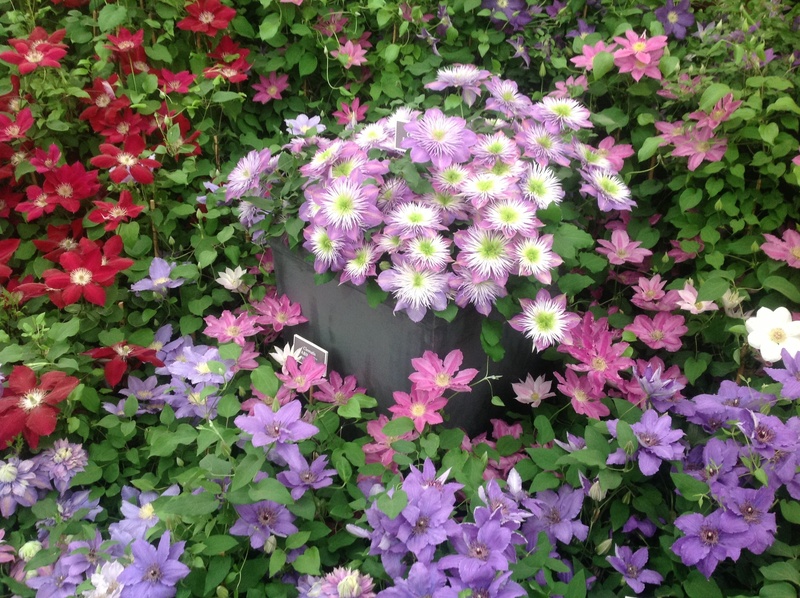3 Must-Know Tips to Maintain a Weed-Free Landscape
Posted on 18/08/2025
3 Must-Know Tips to Maintain a Weed-Free Landscape
Keeping your landscape weed-free not only enhances the visual appeal of your property but also promotes the health of your plants and soil. Weeds compete for critical resources such as water, sunlight, and vital nutrients, often overwhelming your garden or lawn if left unchecked. In this comprehensive guide, we'll dive deep into three proven strategies that every homeowner and garden enthusiast should use to achieve and maintain a pristine, weed-controlled outdoor space. Whether you are seeking to maintain a backyard oasis, a front yard showpiece, or commercial landscaping, these must-know tips will empower you to cultivate a beautiful, weed-free garden all year round.
Why Is a Weed-Free Landscape Important?
Before diving into practical tips, it's essential to understand why maintaining a weed-free yard goes beyond aesthetics. Common landscape weeds can:
- Compete with your plants for nutrients, water, and sunlight
- Harbor pests and diseases that may spread to your desired plants
- Reduce curb appeal and lower property values
- Increase maintenance time and costs over time

Tip #1: Mulch - Your First Defense Against Weeds
One of the most effective techniques for suppressing weeds in your landscape is mulching. Mulch acts as a barrier, blocking light access and preventing weed seeds from germinating and emerging.
Benefits of Mulching for Weed Control
- Prevents sunlight from reaching the soil surface, reducing weed seed germination.
- Helps retain moisture for your desired plants, making your garden beds less appealing for many weed species.
- Regulates soil temperature, creating a less hospitable environment for weeds.
- Improves soil health as organic mulches decompose, adding nutrients to the ground.
- Offers instant aesthetic improvement by providing a uniform, polished look to any landscape bed.
How to Apply Mulch for Weed Prevention
If you want your landscape to remain weed-free, follow these mulching best practices:
- Choose the right type of mulch: Organic mulches (such as shredded bark, wood chips, shredded leaves, or compost) are highly recommended for gardens and flower beds. Inorganic mulches (like rubber or rock) are suitable for areas with no plantings.
- Apply the right thickness: Maintain a 2-4 inch layer. Too little mulch won't effectively block weeds, and too much can suffocate plant roots.
- Keep mulch away from plant stems and tree trunks: This prevents rot and discourages burrowing pests.
- Refresh mulch annually: Over time, mulch breaks down. Replenish as needed for maximum weed suppression.
Pro tip: For extra weed control, consider laying down a breathable commercial landscape fabric underneath the mulch layer. Avoid using plastic sheets, which can restrict air and water movement to plant roots.
Tip #2: Regular Maintenance - The Secret to Preventing Weed Spread
While mulching greatly reduces weed growth, even the best-mulched gardens may experience the occasional weed breakthrough. Consistency is key--by embracing a regular maintenance routine, you can stop weeds in their tracks before they become a major problem.
Weed Early and Often
Weeding isn't just about appearance--it's about removing competition before it gets established. The earlier you act, the easier it is to maintain your weed-free landscape.
- Pull weeds when the soil is moist. It's easier to remove the entire root system after a rainfall or irrigation.
- Hand-pull or use a hoe regularly to eliminate weeds while they are still small and before they flower or seed.
- Dispose of uprooted weeds immediately to prevent seeds from spreading.
- Pay special attention to the edges of beds, pathways, and around trees where weeds often take hold first.
Stay Vigilant Throughout the Year
Weed control is a year-round task. Different weed species germinate and thrive in varying seasons:
- Spring: Check for early-germinating annual weeds. Remove them before they have a chance to flower and spread seeds.
- Summer: Mulch regularly and inspect for heat-tolerant weeds. Watch for crabgrass, clover, and dandelions.
- Fall: Continue pulling perennial weeds such as bindweed and thistle, and clear away dead plant debris which can harbor seeds.
- Winter: Perform cleanup of cool-season weeds. Consider a pre-emergent herbicide as recommended for your climate and garden type.
Use the Right Tools for the Job
- Hand trowels and dandelion diggers reach deep taproots.
- Hoes and weeders slice through surface rooted weeds in larger areas swiftly.
- Gloves protect your hands from thorns and irritants.
Note: If you're facing a persistent or invasive species, research the best removal method. Some perennial weeds regrow from any root pieces left in the ground, so thorough removal is essential for lasting weed prevention.
Address Bare Spots Quickly
Open, unplanted soil invites weed seeds. Patch bare areas with fresh plantings, mulch, or groundcover as soon as possible to minimize weed colonization.
Tip #3: Promote Dense, Healthy Plant Growth
A lush, thriving landscape is one of the most effective natural weed barriers! When your desirable plants grow densely, they shade the soil, leaving less room and light for invasive species to take root and spread.
Best Practices for Dense, Weed-Resistant Plantings
- Select groundcovers, shrubs, and perennials that naturally spread and form a thick mat or canopy.
- Plant flowers and vegetables in blocks or drifts rather than isolated rows, maximizing coverage and reducing bare soil.
- Sow lawn grass thickly and choose dense turf varieties to crowd out weed seeds.
- Interplant with cover crops or low-growing plants in vegetable beds during the off-season to add organic matter while suppressing weeds.
Maintain Optimal Soil Fertility and Watering Practices
Healthy, vigorous plants are less susceptible to weed intrusion. Here's how to boost your landscape's resilience:
- Test your soil every 2-3 years and amend as needed. Proper nutrient levels promote robust, weed-choking growth.
- Water deeply, but infrequently to establish strong root systems, favoring your ornamental or food plants over shallow-rooted weeds.
- Follow correct fertilizer schedules and avoid excess nitrogen fertilizer, which can encourage rampant weed growth.
Consider Eco-Friendly Herbicides and Prevention Methods
While cultural and physical controls are primary for most landscapes, stubborn weeds may require targeted intervention. Use herbicides as a last resort--preferably natural or organic options:
- Vinegar- or clove oil-based sprays are effective for spot-treating young broadleaf weeds in pathways or cracks.
- Corn gluten meal acts as a natural pre-emergent in lawns and beds, inhibiting weed seed germination.
- Flame weeders offer chemical-free control for driveways and hard surfaces, quickly desiccating unwanted seedlings.
Always follow manufacturer instructions and take care to avoid beneficial plantings when using any herbicide.

Frequently Asked Questions About Weed-Free Landscaping
-
How often should I mulch to control weeds?
Refresh mulch annually, or whenever it decomposes below a 2-inch depth. Inspect for bare spots each season. -
Are landscape fabrics worth it?
When used under mulch, quality landscape fabrics can provide extra weed suppression, especially in perennial beds or around shrubs. -
Should I use chemical weed killers?
Spot treat only as needed for severe infestations; prioritize hand removal, mulching, and dense planting as long-term, non-toxic strategies. -
What are the best plants for outcompeting weeds?
Groundcovers like ajuga, vinca, and pachysandra; native grasses; dense turf species; and vigorous perennials like daylilies or sedum are excellent options. -
Can I compost weeds?
Avoid composting weeds with seeds or persistent roots unless your compost pile reaches sustained high temperatures (above 140?F/60?C).
Conclusion: Achieve a Weed-Free Landscape With Smart Strategies
A beautiful, weed-free yard is within reach if you employ the right methods. Mulching, consistent upkeep, and creating healthy, dense plantings are the keys to lasting success. By acting early, staying vigilant, and promoting a thriving landscape ecosystem, you'll drastically reduce the time and effort spent on weeding--leaving more room for enjoying your outdoor sanctuary.
Are you ready to transform your landscape maintenance routine this season? Start by applying these three must-know tips for a weed-free garden, and experience the satisfaction of lush, vibrant beds free from intrusive and unsightly weeds!
For more landscaping tips and comprehensive lawn care guides, bookmark our blog and follow us for the latest expert advice on creating your dream outdoor space.

